

|
INTRODUCING THE NAMORATUNGA |
||
| 1. Namoratunga are archae- ological sites that share a number of common char- acteristics and associations. Known examples all occur in the Turkana basin of northern Kenya. They also all contain stone pillars, for which they are named "Namoratunga" in the Turkana language. The Turkana believe that they are people that were turned to stone while dancing.
From top to bottom: Jarigole, Lothagam, Kalokol and Il Lokeridede. |
 |
|
| 2. These Namoratunga were all build on top of the same beach, which was created as ancient Lake Turkana retreated from its last prolonged period of overflow, about 8,000 years ago. In this image, the beach is the middle bluish layer between 15 and 20 cm. thick.
On top of the beach, a platform has been constructed by carrying in small boulders, cobbles, gravel and dirt. Here, at Jarigole, it is 20 cm. thick and a light brown due to the slit and clay that it contains. Such platforms are characteristic of Namoratunga architecture. |
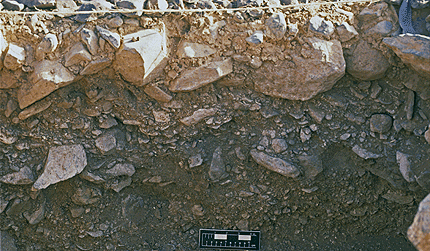 |
|
| 3. Each of these Namoratunga has a collar of large cobbles that surrounds the platform. This is the collar at the Lothagam Namoratunga. It is unusually wide. | 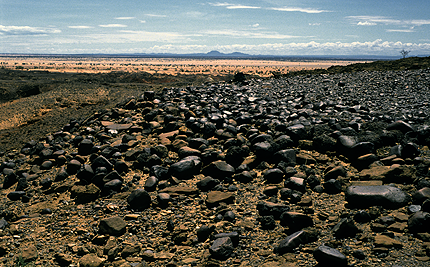 |
|
| 4. Test excavation at two, and erosion at a third, of these Namoratunga contain human remains that are associated with the original structures. Two others were scheduled for testing last fall, so we may soon have more information in this regard. |  |
|
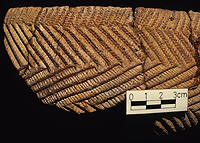 
5. They also all contain a great many grave goods, mostly pottery, which is called Nderit Ware and characterized by internal decorations such as you see above. |
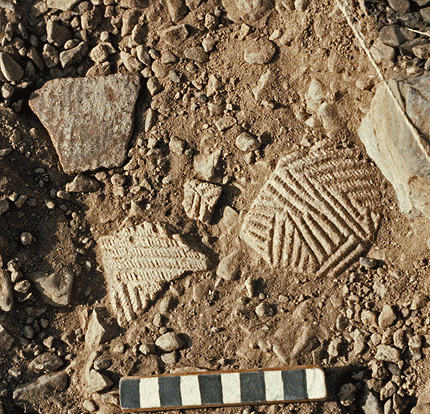 |
|
| 6. Some assert that the pillars at the Kalokol Namoratunga constitute an astronomical observatory, but there is considerable doubt about this. | 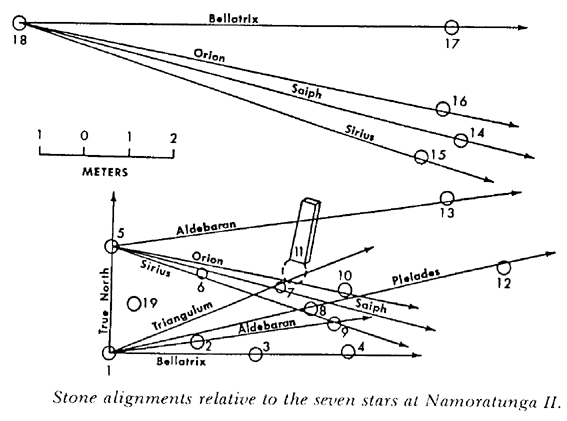 |
|
|
©2009 by Charles M. Nelson All rights reserved. |